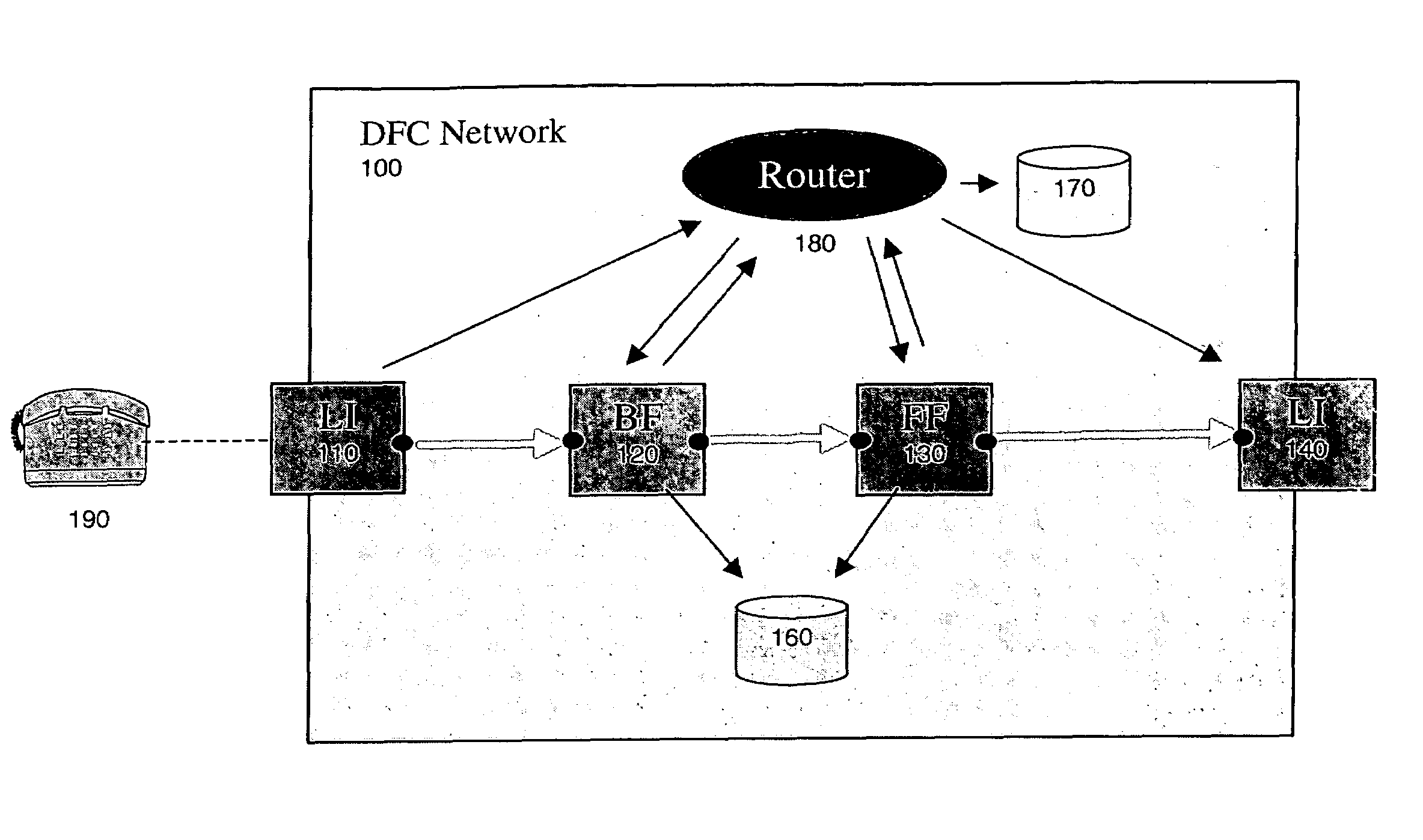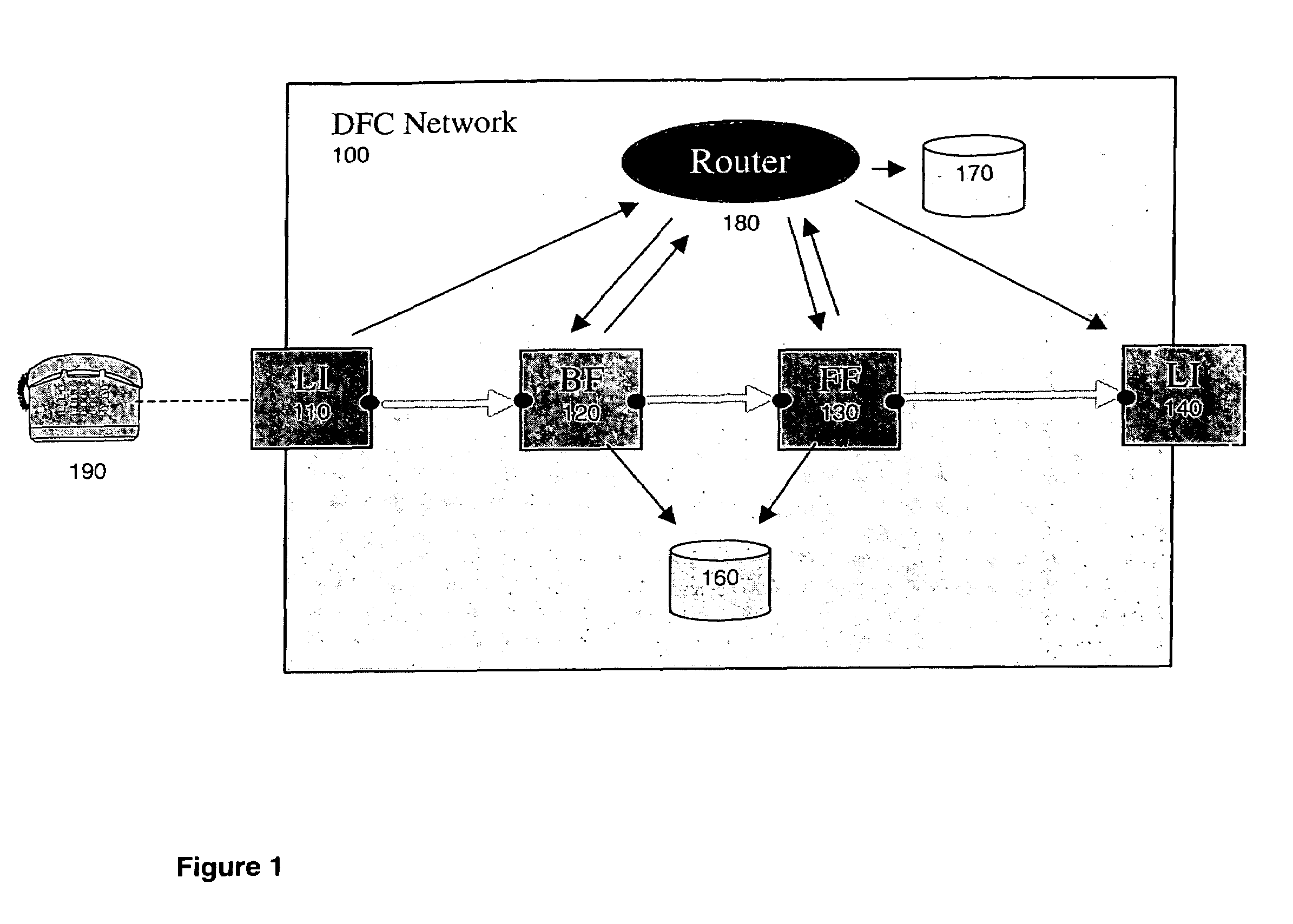Routing extensions for telecommunication network system and method
a routing extension and telecommunication network technology, applied in the field of advanced architectures for the description of telecommunication services, can solve the problems of difficult to manage the behavioral complexity of features and their interactions, the redesign of old features to fit smoothly with new features is scarcely ever a practical option, and the problem of feature interaction arises. to achieve the effect of facilitating modularity and compositional service creation
- Summary
- Abstract
- Description
- Claims
- Application Information
AI Technical Summary
Benefits of technology
Problems solved by technology
Method used
Image
Examples
Embodiment Construction
[0021]FIG. 1 sets forth an example of an abstract diagram of a distributed feature system, adapted in accordance with a preferred embodiment of the present invention. The distributed feature system represents a virtual architecture for describing telecommunication services by separating logic that provides service feature functionality into separate distributed components. The present invention is described in the context of DFC, although the principles of the present invention can be readily extended by one of ordinary skill in the art to other distributed feature architectures.
[0022]As depicted in FIG. 1, the virtual network 100 comprises one or more routers 180 and a plurality of primitive components called “boxes”, e.g. 110 through 140 in FIG. 1 (these are referred to interchangeably as boxes or modules). The boxes have well-defined interfaces and have structured access to operational data (e.g. depicted in FIG. 1 as 160) to help them fulfill their designated roles in the teleco...
PUM
 Login to View More
Login to View More Abstract
Description
Claims
Application Information
 Login to View More
Login to View More - R&D
- Intellectual Property
- Life Sciences
- Materials
- Tech Scout
- Unparalleled Data Quality
- Higher Quality Content
- 60% Fewer Hallucinations
Browse by: Latest US Patents, China's latest patents, Technical Efficacy Thesaurus, Application Domain, Technology Topic, Popular Technical Reports.
© 2025 PatSnap. All rights reserved.Legal|Privacy policy|Modern Slavery Act Transparency Statement|Sitemap|About US| Contact US: help@patsnap.com



